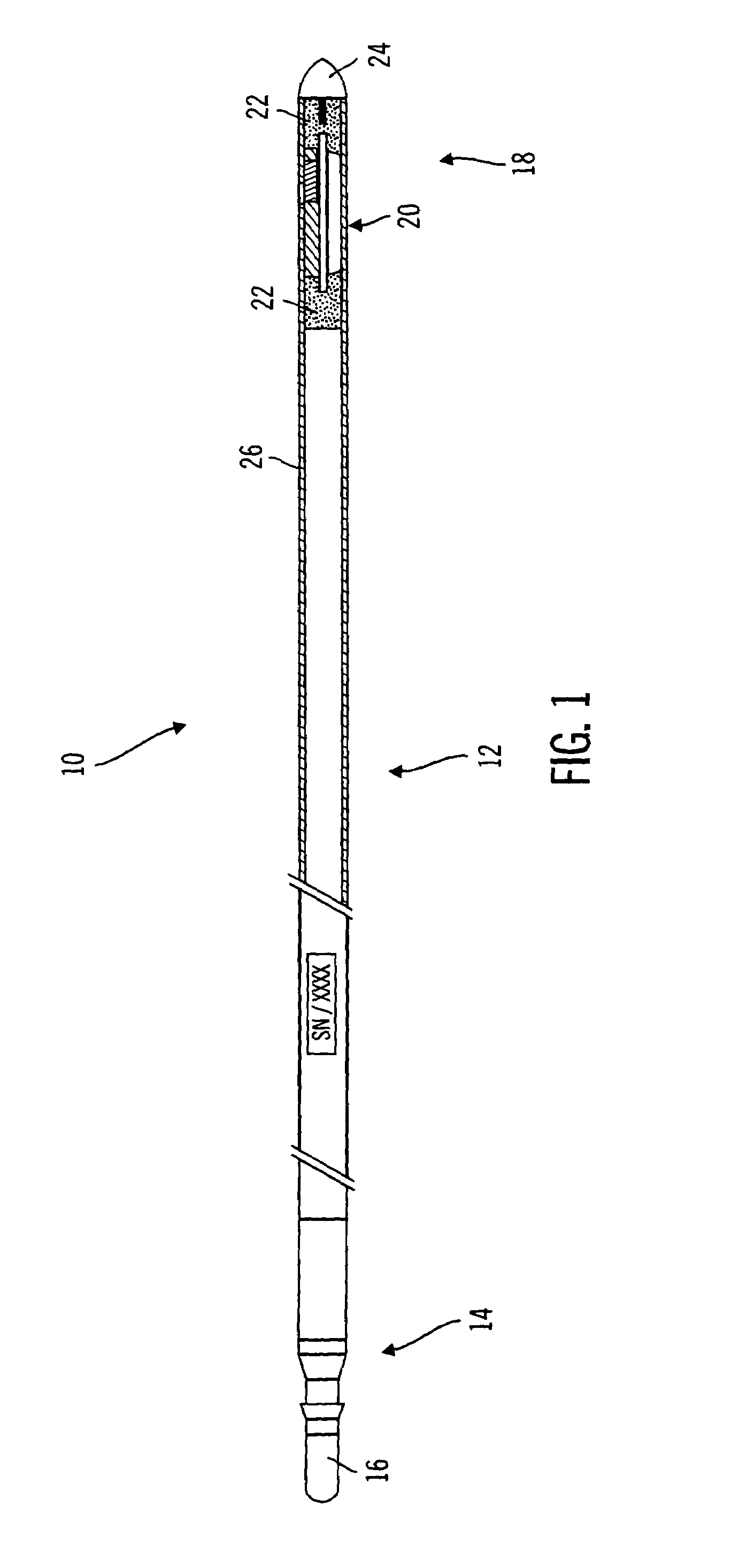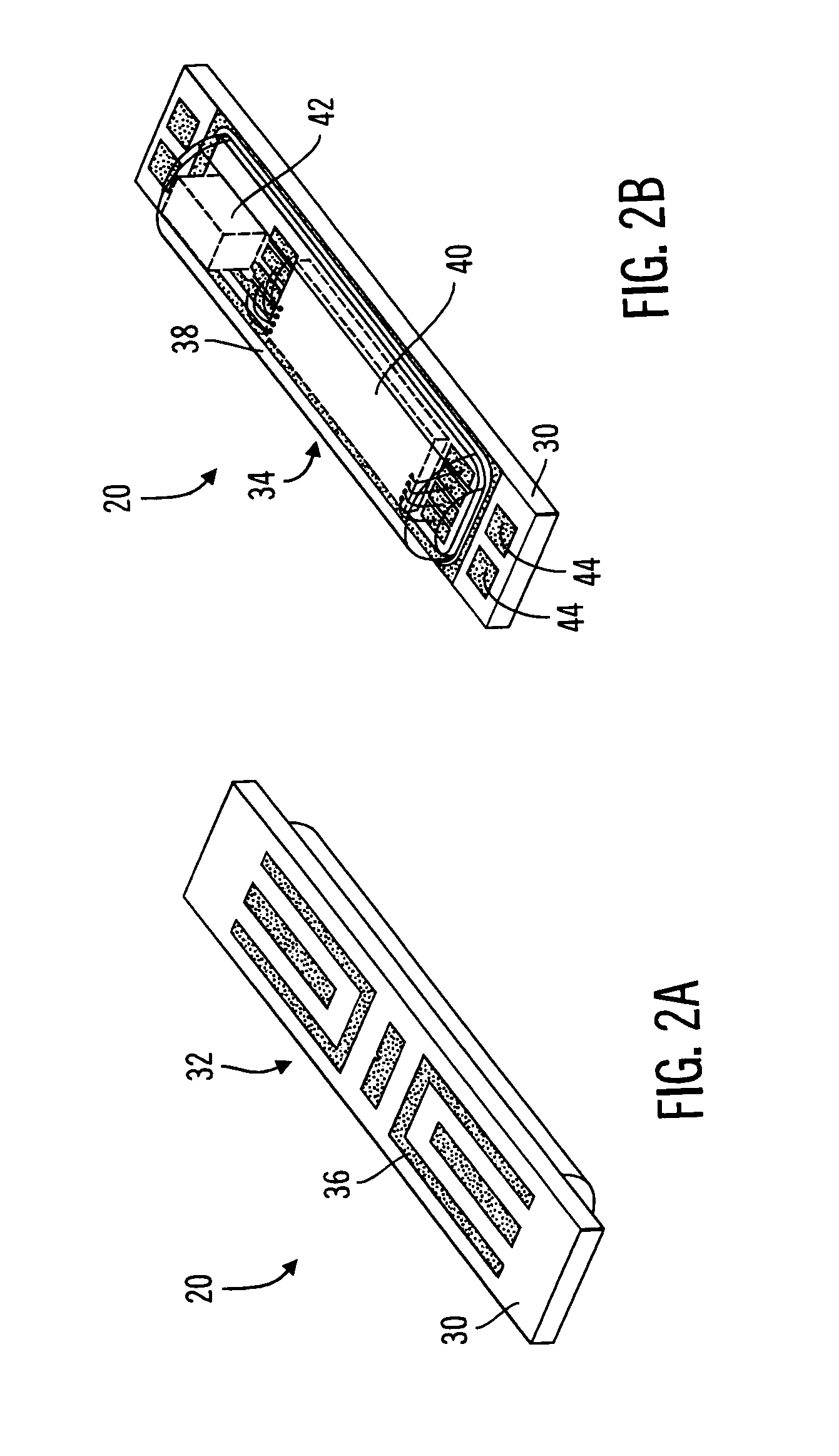Method and apparatus for enhancing the integrity of an implantable sensor device
a sensor device and integrity technology, applied in the field of medical devices, can solve the problems of unstable sensing performance or sensor failure, oxygen sensor implanted into the body, requiring frequent and periodic recalibration and replacement, etc., and achieves the effect of reducing the size of the window opening, minimizing the window perimeter, and reducing flux
- Summary
- Abstract
- Description
- Claims
- Application Information
AI Technical Summary
Benefits of technology
Problems solved by technology
Method used
Image
Examples
Embodiment Construction
[0045]The present invention relates generally to sensor structures for electronic medical implant devices, and to methods for making such sensors. This description is not to be taken in a limiting sense, but is made merely for the purpose of illustrating the general principles of example embodiments of the invention. The scope of the invention is best defined by the appended claims. In the following description, numerous specific details are set forth to provide a more thorough description of one or more embodiments of the invention. It will be apparent, however, to one skilled in the art, that the invention may be practiced without these specific details. Other embodiments may be utilized and structural changes may be made without departing from the scope of the present invention. Though described herein as a sensor for monitoring physiological parameters such as glucose level, for example, it will be apparent that embodiments of the invention are also applicable to other sensor ap...
PUM
| Property | Measurement | Unit |
|---|---|---|
| swelling | aaaaa | aaaaa |
| elastomeric | aaaaa | aaaaa |
| flexibility | aaaaa | aaaaa |
Abstract
Description
Claims
Application Information
 Login to View More
Login to View More - R&D
- Intellectual Property
- Life Sciences
- Materials
- Tech Scout
- Unparalleled Data Quality
- Higher Quality Content
- 60% Fewer Hallucinations
Browse by: Latest US Patents, China's latest patents, Technical Efficacy Thesaurus, Application Domain, Technology Topic, Popular Technical Reports.
© 2025 PatSnap. All rights reserved.Legal|Privacy policy|Modern Slavery Act Transparency Statement|Sitemap|About US| Contact US: help@patsnap.com



